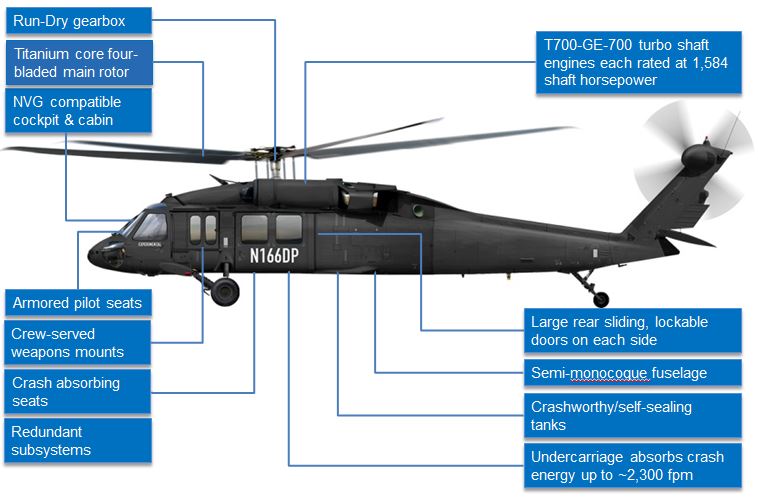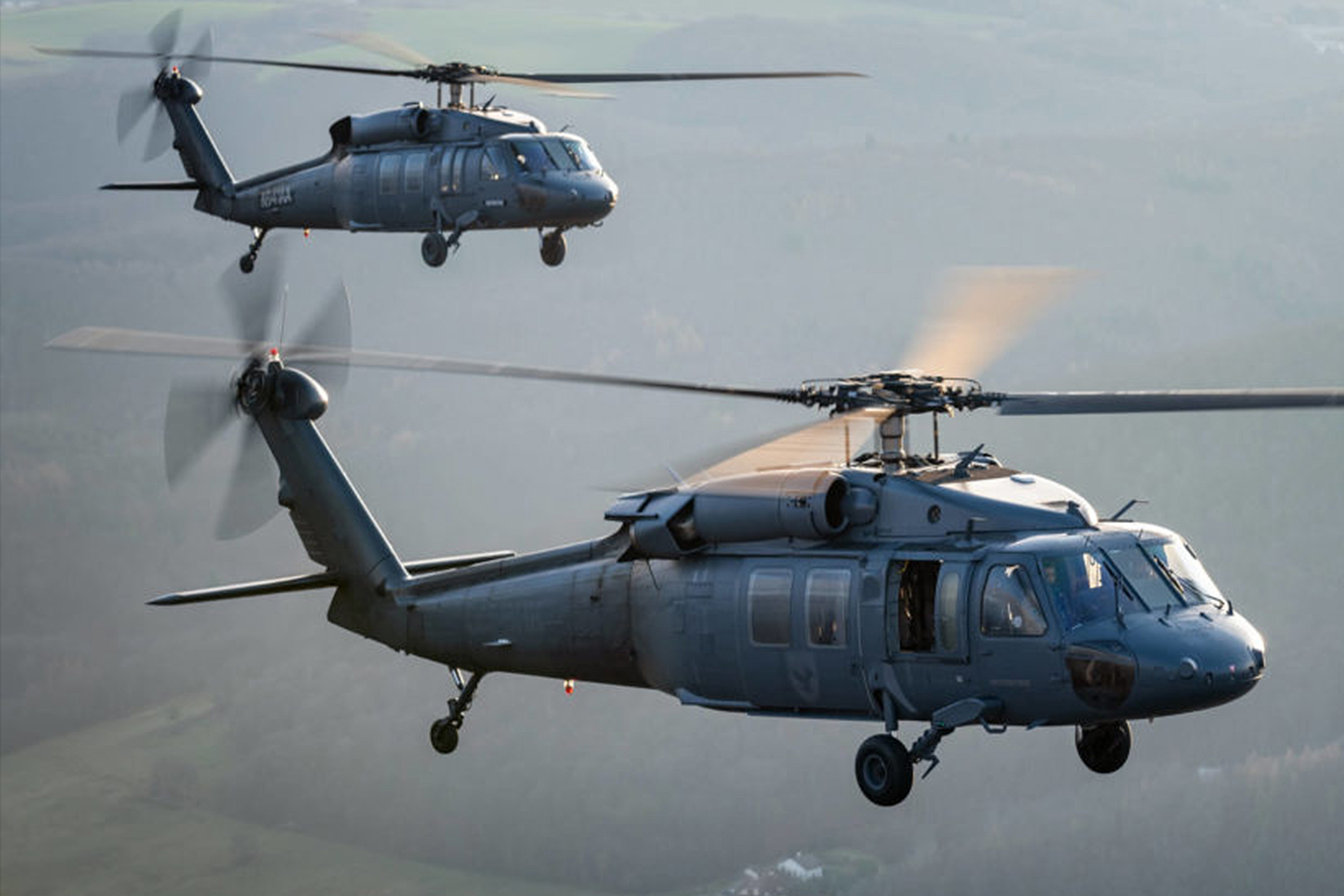A Comprehensive Guide to the UH 60's Functions and Efficiency Metrics
A Comprehensive Guide to the UH 60's Functions and Efficiency Metrics
Blog Article
UH-60: Advancements in Modern Helicopter Style
The UH-60 helicopter stands as a benchmark in contemporary aviation, showcasing considerable developments in layout and innovation that provide to the developing needs of armed forces operations. As we check out the advancement and essential technologies of the UH-60, it becomes crucial to think about just how these advancements affect not only existing applications but additionally the future landscape of helicopter design.

Development of the UH-60
The evolution of the UH-60 Black Hawk helicopter stands for a substantial turning point in aerospace engineering and military aeronautics. Introduced in the late 1970s, the UH-60 was designed by Sikorsky Airplane to satisfy the United States Military's requirement for a flexible energy helicopter with the ability of carrying out a variety of goals. Its style emphasized sturdiness, speed, and ability to move, setting brand-new standards for functional performance.
The UH-60 features a distinct four-blade blades system, which enhances lift and security, enabling it to operate successfully in varied settings. Its airframe is created from advanced composite materials, adding to a decrease in weight while maintaining architectural stability. The helicopter's layout likewise incorporates better the rules of aerodynamics, which improves gas effectiveness and increases variety.
Throughout the years, the Black Hawk has gone through multiple upgrades to improve its capabilities, consisting of improved engines, progressed flight control systems, and modular systems for easy maintenance and flexibility. The helicopter's ability to execute missions ranging from troop transport to clinical emptying has actually solidified its role as a backbone of united state military procedures. The UH-60 Black Hawk remains an archetype of just how innovation in helicopter style can substantially influence army performance and operational flexibility.
Advanced Avionics Systems
Developments in avionics systems have actually transformed the abilities of modern-day helicopters like the UH-60 Black Hawk, improving functional performance and situational recognition (UH 60). The assimilation of sophisticated avionics enables enhanced communication, navigating, and flight administration, making the UH-60 extra functional in varied goal accounts
One of the key features is the advanced electronic cabin, which utilizes multifunction screens that provide real-time data, making sure pilots have immediate accessibility to crucial flight info. This streamlining of info lessens pilot work and enhances decision-making processes throughout facility operations. Furthermore, the incorporation of GPS and inertial navigating systems makes it possible for specific positioning and course preparation, improving goal implementation in tough settings.
Additionally, advanced avionics systems enhance interaction abilities through safe information web links and voice interaction systems, allowing seamless control with ground pressures and various other airplane. The assimilation of automatic flight control systems further contributes to improved security and control, particularly in adverse climate condition or throughout low-altitude maneuvers.
Engine and Performance Enhancements
Engine performance in modern helicopters has taken a significant jump onward, driven by technologies that enhance power, reliability, and efficiency. The UH-60 Black Hawk, for instance, utilizes the T700-GE-701C engine, which features a dual-channel, full-authority electronic engine control system.
Furthermore, the assimilation of engine health monitoring systems enables real-time diagnostics and anticipating maintenance, dramatically enhancing operational reliability. These systems not only sharp staffs to potential problems before they come to be important yet likewise promote much more efficient maintenance organizing, thereby minimizing downtime.

Products and Structural Innovations
Current developments in materials and architectural layout have revolutionized modern helicopter construction, boosting both performance and resilience. The introduction of sophisticated composite products, such as carbon fiber strengthened polymers, has actually substantially reduced weight while preserving architectural integrity. This look what i found change not only boosts fuel efficiency but additionally raises haul capability, enabling helicopters like the UH-60 to execute even more diverse missions.
Furthermore, advancements in aluminum alloys and titanium parts have added to improved resistance to corrosion and fatigue, prolonging the life-span of essential airframe elements. The critical use these products has brought about a decrease in maintenance demands and boosted general functional readiness.

Additionally, the integration of computer-aided design (CAD) and additive manufacturing modern technologies has enabled a lot more light-weight frameworks and intricate geometries, optimizing the aerodynamic performance of helicopter styles. These improvements promote rapid prototyping and manufacturing, permitting suppliers to react quickly to progressing mission demands.
Safety And Security and Survivability Features
Security and survivability attributes in contemporary helicopter layout have actually become extremely important, showing the increasing demands for goal performance in difficult atmospheres. The UH-60 Black Hawk, a notable example, integrates sophisticated modern technologies to enhance crew and passenger protection.
The helicopter additionally employs a ballistic defense system, that includes armored staff seats and important systems securing, decreasing vulnerability to tiny arms fire and shrapnel. Boosted situational awareness is achieved through advanced avionics and sensor technologies, allowing pilots to discover and stay clear of threats effectively.
Furthermore, the integration of redundancy in essential systems-- such as dual engines and numerous flight control channels-- guarantees continued procedure also if one system falls short. The UH-60 is equipped with advanced emergency situation flotation protection gadgets, improving survivability in water touchdowns. Jointly, these attributes not just improve the safety of employees however additionally boost objective success prices in hostile atmospheres, demonstrating the dedication to excellence in helicopter design.
Conclusion
The UH-60 helicopter stands for a considerable improvement in modern air travel modern technology, incorporating cutting-edge materials, advanced avionics, and robust security attributes. Its advancement reflects a commitment to improving efficiency and operational effectiveness while guaranteeing pilot and crew survivability. The assimilation of light-weight composites and advanced useful content navigation systems highlights the helicopter's adaptability in different army missions. In general, the UH-60 works as a standard for future developments in helicopter design, symbolizing strength and flexibility in contemporary military operations.
The UH-60 helicopter stands as a criteria in modern-day air travel, showcasing substantial developments in design and modern technology that provide to the advancing needs of army procedures. As we check out the evolution and essential developments of the UH-60, it ends up being crucial to think about how these growths affect not just present applications yet additionally the future landscape of helicopter layout.
Introduced in the late 1970s, the UH-60 was developed by Sikorsky Aircraft to fulfill the United States Army's demand for a flexible utility helicopter capable of executing a range of goals. The UH-60 Black Hawk continues to be a prime example of just how development in helicopter style can dramatically influence armed forces effectiveness and operational versatility.
Generally, the UH-60 offers as a standard for future growths in helicopter layout, personifying strength and convenience in contemporary armed forces procedures.
Report this page